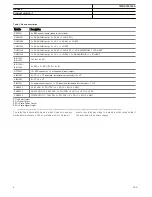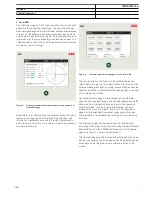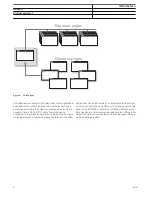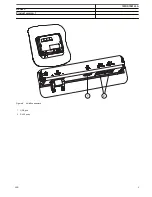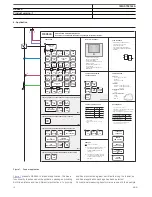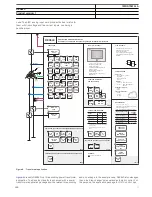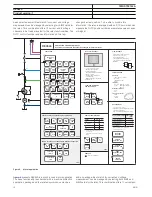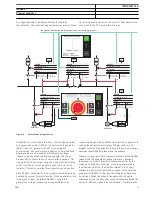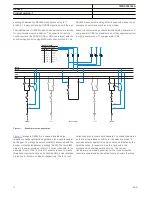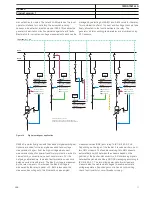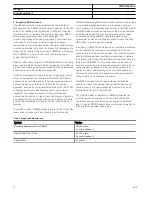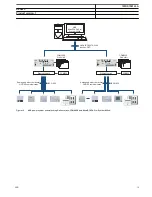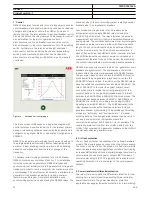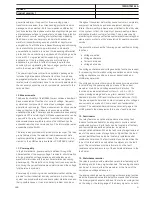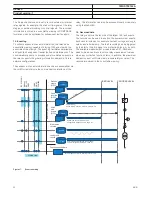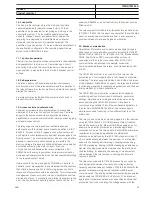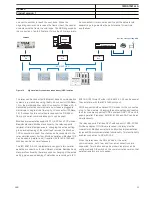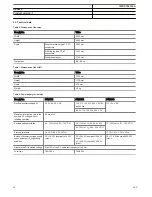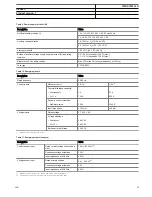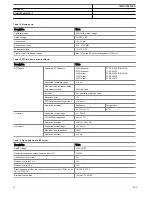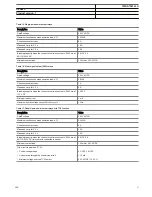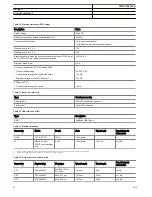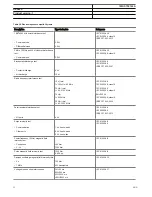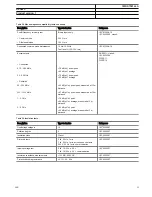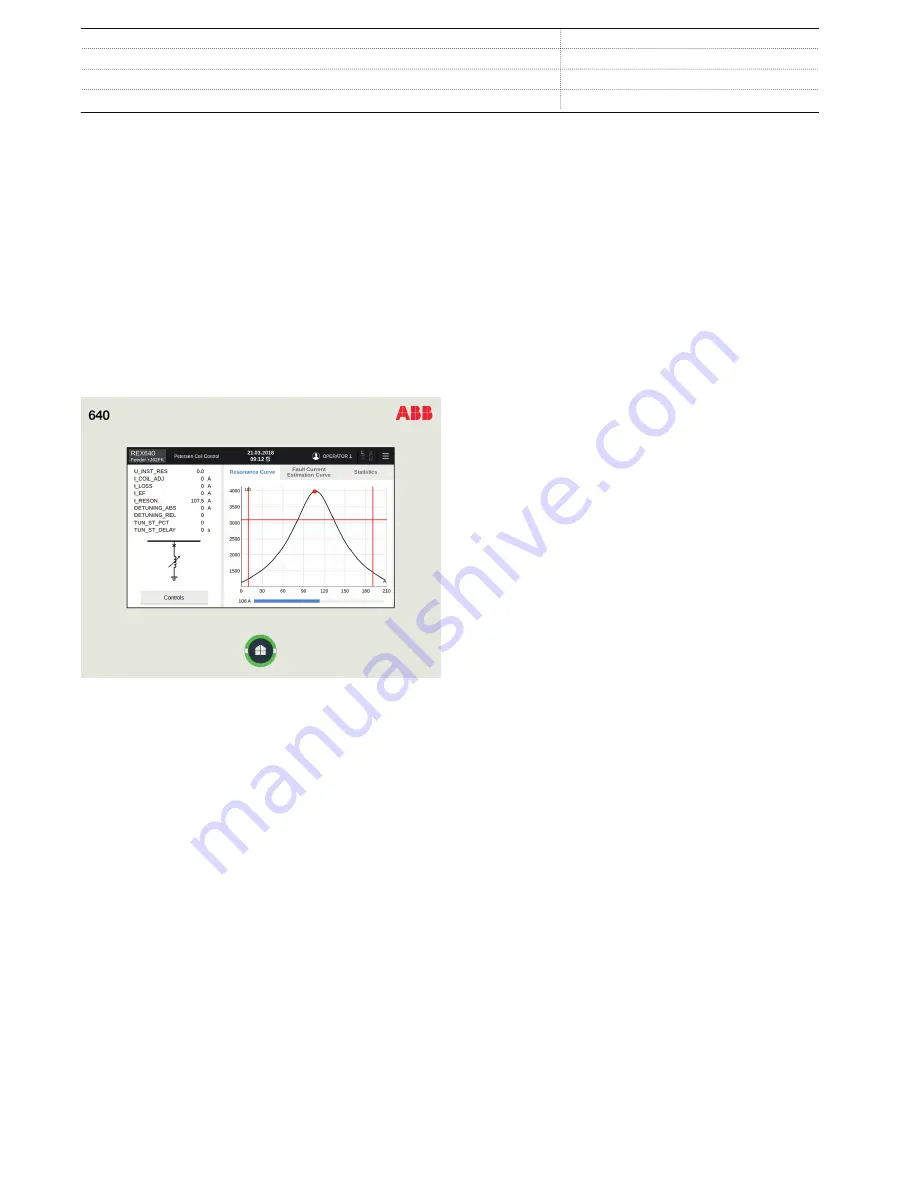
7. Control
REX640 integrates functionality for controlling objects such as
circuit breakers, disconnectors, earthing switches, on-load tap
changers and Petersen coils via the LHMI or by means of
remote controls. The relay includes three circuit breaker control
blocks. In addition, the relay features 14 disconnector control
blocks intended for the motor-operated control of
disconnectors or a circuit breaker truck and three control
blocks intended for the motor-operated control of the earthing
switch. Furthermore, the relay includes eight additional
disconnector position indication blocks and three earthing
switch position indication blocks that can be used with
disconnectors and earthing switches that are only manually
controlled.
GUID-4F9E2890-705B-45B8-BA72-4CFB6AFFB493 V1 EN
Figure 16.
Petersen Coil control page
The touch screen LHMI supports a single-line diagram with
control points and position indication for the relevant primary
devices. Interlocking schemes required by the application are
configured using Signal Matrix or Application Configuration in
PCM600.
REX640 includes two autoreclosing functions, each with up to
five programmable autoreclosing shots of desired type and
duration. A load-shedding function performs load shedding
based on underfrequency and the rate of change of the
frequency.
To validate correct closing conditions for a circuit breaker,
REX640 contains a synchrocheck function. For installations
including synchronous generators, REX640 introduces a
synchronizer that actively controls the generator’s voltage and
frequency in order to reach a synchronous situation across the
circuit breaker. The synchronizer functionality is available for a
generator circuit breaker as well as for a non-generator
(network) circuit breaker. A complete installation-wide
synchronizing system can be built using the REX640 relays. The
maximum size of the synchronizing system is eight generator
breakers and 17 non-generator breakers.
Synchronization of a generator circuit breaker can be
implemented using a single REX640 relay including the
ASGCSYN function block. The relay interfaces the external
measurement and control circuitry via hardwired binary and
analog signals. The excitation and prime mover control signals
are based on pulse commands, either with fixed or variable
length. The synchronizer function block has three different
function modes: manual, semi-automatic and automatic. In
each of these modes, the LHMI acts as the local user interface.
The LHMI includes the necessary command, indication and
measurement features for each of the modes, thus rendering
the conventional dedicated synchronizing panel unnecessary.
REX640 also supports systems in which non-generator circuit
breakers are synchronized. The prerequisite is that all the
feeders within the system are equipped with REX640 relays.
The generator relays have to contain the ASGCSYN function
block and all the non-generator relays need to contain the
ASNSCSYN function block. In addition, all the REX640 relays
have to contain the coordinator function block ASCGAPC. The
role of ASCGAPC is to model the system primary circuit
connection state to involve the correct generators for the
synchronization of a non-generator breaker and to interact
between the ASGCSYN and ASNSCSYN function blocks. The
information exchange between ASCGAPC, ASGCSYN and
ASNSCSYN is carried out via binary and analog GOOSE
signalling as per IEC 61850-8-1. The LHMI dedicated to the
relay (breaker) works as the local user interface for a non-
generator breaker synchronizing. The available synchronizing
modes are “automatic” and “semi-automatic”. A manual
synchronization of the non-generator breaker can be carried
out as a back-up solution in situations where the
communication system (IEC 61850-8-1) is not available. This
requires operator actions from two LHMIs, namely from the
LHMI of the concerned non-generator breaker and the LHMI of
the manually selected generator relay.
8. Arc flash protection
The arc flash protection is available on the optional hardware
module. The module supports connection of up to four sensors.
The sensors can be of lens or loop types, or a free mixture. Both
sensor types are supervised against sensor failure. Fast tripping
increases staff safety and limits material damage, therefore it is
recommended to use static power outputs (SPO) instead of
normal power outputs (PO). This typically decreases the total
operating time with 4..6 ms compared to the normal power
outputs.
9. Power transformer differential protection
The relay offers low-impedance differential protection for two-
winding (two restraints) and three-winding (three restraints)
power transformers. The power transformer protection
application package includes the protection for a two-winding
1MRS759144 A
REX640
Product version: 1
20
ABB
Summary of Contents for RELION REX640
Page 1: ...RELION PROTECTION AND CONTROL REX640 Product Guide...
Page 128: ...128...
Page 129: ......
Page 130: ......
Page 131: ......

